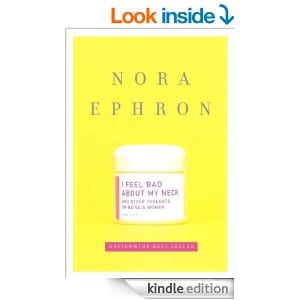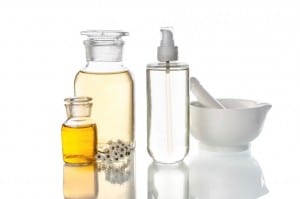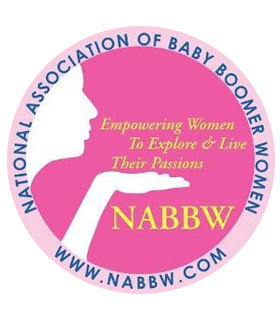For Everyone Who’s Ever Wondered: What’s In My Skin Care Products?
By Gretchen Asher, Special for the NABBW
 As owner of BeFab Skin Care, I have a passion not only for creating stellar products, but also to educate women about anti-aging products, ingredients, skin care science available today and what to look for in products for your needs. This is the first article of many that will build on this foundational bit of information.
As owner of BeFab Skin Care, I have a passion not only for creating stellar products, but also to educate women about anti-aging products, ingredients, skin care science available today and what to look for in products for your needs. This is the first article of many that will build on this foundational bit of information.
Understanding skin care products can be very confusing and frustrating. Especially for those of us beyond our early/mid 40s when we begin to experience surprising changes in our skin due to peri-Menopause/menopause and we start to see the dreaded signs of aging. Yes, ladies, our neck begins to go south first in our early 40s, as Nora Ephron lamented in her book, “I Feel Bad About My Neck”, but more on that in a future article.
We start to see our skin age and while we aren’t ready for Botox, fillers or – gulp – a face or neck lift, we hope for better performance out of our topical skin care products, or we think that there is nothing that can be done…but I’m here to tell you that topical skin care technology is AMAZING these days and we should understand it so that we can use it to the fullest and continue to look as young as we Boomers & GenXers feel.
So where to start? It all starts with the raw materials. Let me explain…
A Little Bit about Raw Ingredients:
Every skin care brand/manufacturer has to purchase raw ingredients from a supplier. Raw ingredient suppliers have the burden of proving to formulation chemists (of the brand/manufacturer) that their ingredient can actually perform in a finished product. For this reason, suppliers test their ingredients for safety, efficacy, and shelf life. Only then will a (brand/manufacturer) formulation chemist consider using that particular raw material/ingredient.
What Makes Up A Skin Care Product?
Just for a second, let’s go over the four categories of ingredients that go into a finished skin care product:
Active ingredients—These ingredients have the greatest impact on your skin. We want the right actives in the right concentration to actually visibly improve our skin. Guess what? This type of ingredient is optional. Yes, you read that correctly. Some skin care products (brands/manufacturers) don’t contain any active ingredients.
What??? What do they contain then, you might be wondering?
They contain the 3 remaining categories of ingredients…
- Conditioning ingredients—These ingredients, when applied topically, alter the feel of the skin ie; softening, smoothing, soothing, moisturizing, etc. If your product doesn’t contain active ingredients, it DOES contain conditioning ingredients which makes your skin feel good but you don’t have anything to help fight the signs of aging. Tisk Tisk! Remember, active ingredients have the biggest impact on your skin so that you see results. Conditioning ingredients just make you skin FEEL nice, that’s all.
- Functional ingredients—These ingredients are the delivery system that constitutes whether or not a product is a lotion, cream, serum, gel, etc. Functional ingredients simply determine the product type. In all products otherwise we can’t classify the product.
- Preservatives—Preservatives ensure that a product will remain free of bacteria, yeast and mold over an extended period of time with normal use. This had better be in all products!
OK, now I’m going to expose a dirty little secret of the skin care industry…
I mentioned above that active ingredients actually impact the skin and produce visible anti-aging changes. Here’s the dirty little secret…What some brands/manufacturers do to cut costs and increase profit margins use “trace amounts” of active ingredients just to be able to list them on the label.
By law, any ingredient of 0.001 or 1/1000th of 1% must be listed as an ingredient. The cost of 1/1000th of 1% of an ingredient is MUCH lower than the cost of an ingredient at say, 2%, 4%, 6% or 10% concentration (as determined by the raw ingredient supplier clinical studies).
This is very misleading to women, we assume it has an impact and we can trust it. In reality, it’s a lie. A “trace amount” doesn’t do us any good. But it does raise the price for the brand/manufacturer, due to the hype of that particular ingredient.
- So, the key is to find products with the right active ingredients in the right concentration.
- Look for products that are clinically tested or contain active ingredient which have been clinically tested.
I’ll be expanding on these four categories of ingredients in future articles publisher here at NABBW.com, to teach what to look for in each category and what to look for in each product; eye creams, night creams, etc.
If you want me to address any particular skin questions/concerns in future articles, please email me at info@befabskincare.com.
Gretchen Asher, Befab Skin Care
www.befabskincare.com
www.facebook.com/befabskincare
www.twitter.com/Befabskincare
info@befabskincare.com


